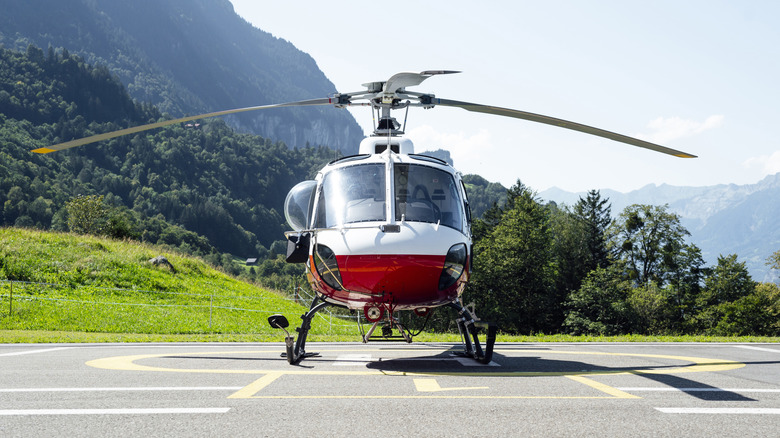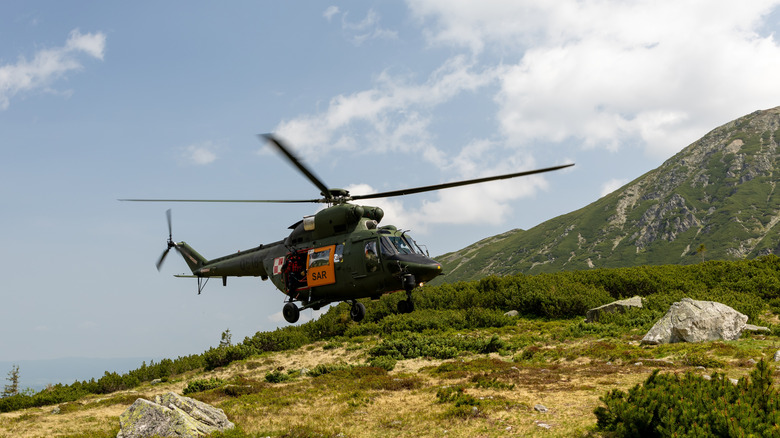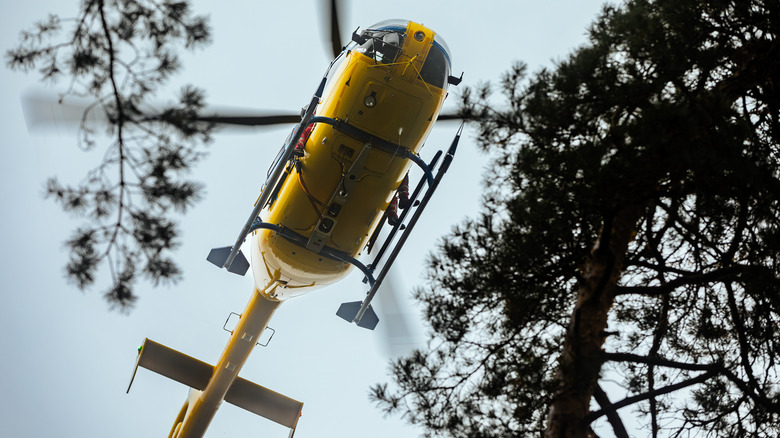What Stops A Helicopter Pilot From Just Landing Anywhere?
While the transportation industry as a whole has been improving over the years, the aviation sector has established itself as one of the most advanced. Companies like General Electric have introduced innovations such as the GE9X, the largest and most powerful commercial engine ever built, setting new standards across the industry. Journeys across the globe that once took months to see through now only take a few hours, with flights between countries such as the U.S. and Australia only lasting a mere 16 hours. Among aviation's most interesting achievements, though, must be the rotary-wing perfection that is the helicopter, a craft that has redefined air travel as we know it.
The helicopter is as adaptable as it is versatile, and this can be seen in its extensive application in numerous fields, ranging from the military to civilian transport. One of its most unique abilities is the ability to land anywhere. However, you'd be surprised to learn that, although this is technically true, helicopters can't just land anywhere the pilot chooses. This is due to several reasons, including legal restrictions barring landing in certain areas, safety concerns like landing on loose gravel, and practical factors like the pilot's experience, especially during bad weather. Let's go over each reason in detail to see how they affect when and where a pilot can land a helicopter.
The pilot must decide where to land in an emergency
Like private jets, which have their own limitations when it comes to where they can land, helicopters certainly enjoy more regions where they can safely land than other commercial aircraft. However, governments worldwide have established regulations on where this can happen, with designated public airports and helipads being the most common locations. Each of these areas has the expected facilities and staff (if needed) to ensure a proper and safe landing. In cases where a helipad or airport isn't in close proximity, the local authority may approve public landings, focusing on open areas such as football fields or parks.
In situations where an emergency landing is required, it's up to the pilot to make a careful judgment to ensure the craft lands as safely as possible with minimal risk to the environment. In most emergency situations, split-second decision making is key to saving lives, which may lead the pilot to ground the helicopter in areas that wouldn't normally be approved for landing.
There are rules for landing in private and restricted areas
If you own a helicopter, you can land it anywhere on your private property. However, if the property isn't yours, seeking the landowner's permission before grounding the helicopter is a necessity. The rules are different when it comes to restricted areas such as military zones. As a rule, helicopters should avoid flying over these areas or risk deadly repercussions.
Other factors affecting where a pilot can land a helicopter include environmental variables such as weather and the land where the pilot expects to land the craft. Storms and strong winds typically make landing dangerous, while surface conditions such as uneven terrain and slopes can complicate what would otherwise be a safe and comparatively easy landing.
Practical reasons also come into play. Experienced pilots will find it easier to put down a helicopter in turbulent weather or to land it on the slope mentioned above, while a novice might opt out entirely. The type of helicopter also matters here, as military helicopters and civilian helicopters perform vastly differently, especially when you consider that military helicopters are more geared for daunting situations and locations.


